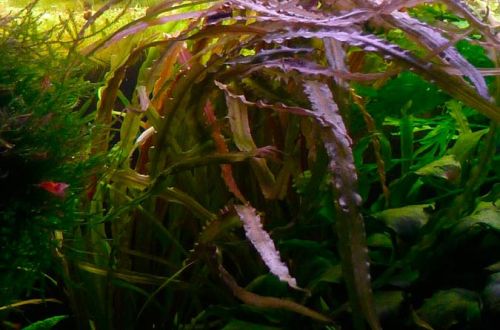
Egeria nayasa
Egeria najas, scientific name Egeria najas. It grows naturally in Central and South America. It occurs everywhere, in stagnant water bodies (lakes, swamps) or in sections of rivers with a weak current (backwaters). The plant was discovered in 1849 by the botanist Jules Emile Planchon, who singled out a separate genus Egeria, which includes another popular aquarium plant, Egeria Densa.

Both species are similar and are sometimes confused. Plants have a main long stem, on which four leaflets are arranged in tiers (nodes) annularly at the same height. The differences lie in the structure of the leaf blades. In Egeria naias, they are longer and have distinct notches along the edges, but in the lower old part of the plant, the edges of the leaves become even.
This is a completely aquatic plant, unable to grow in the air. Considered to be very easy to maintain. It can be placed in an aquarium and only periodically trimmed. No further maintenance procedures are required. Egeria nayasa perfectly adapts to a wide range of temperatures, values of the hydrochemical composition of water and various levels of illumination.





